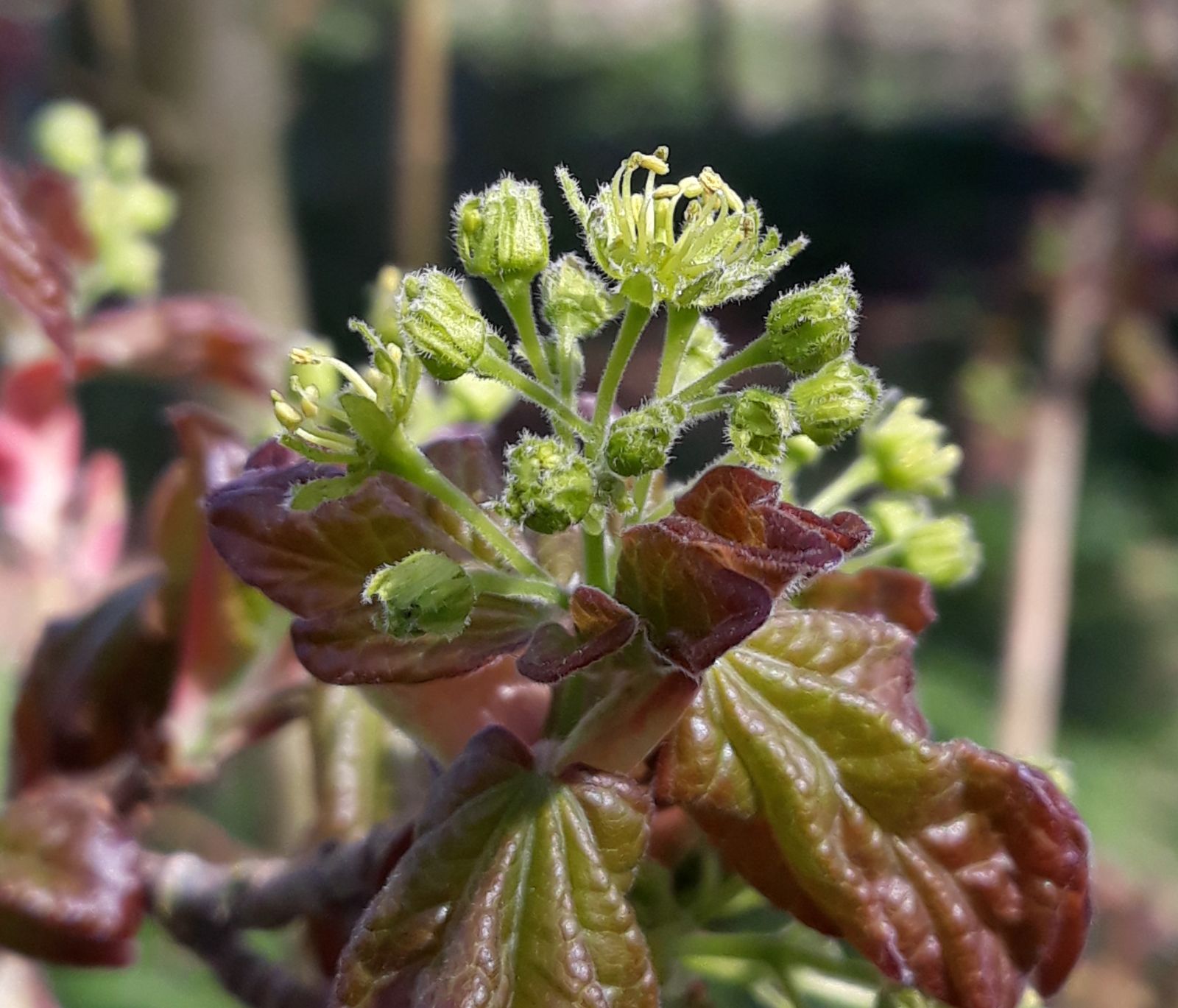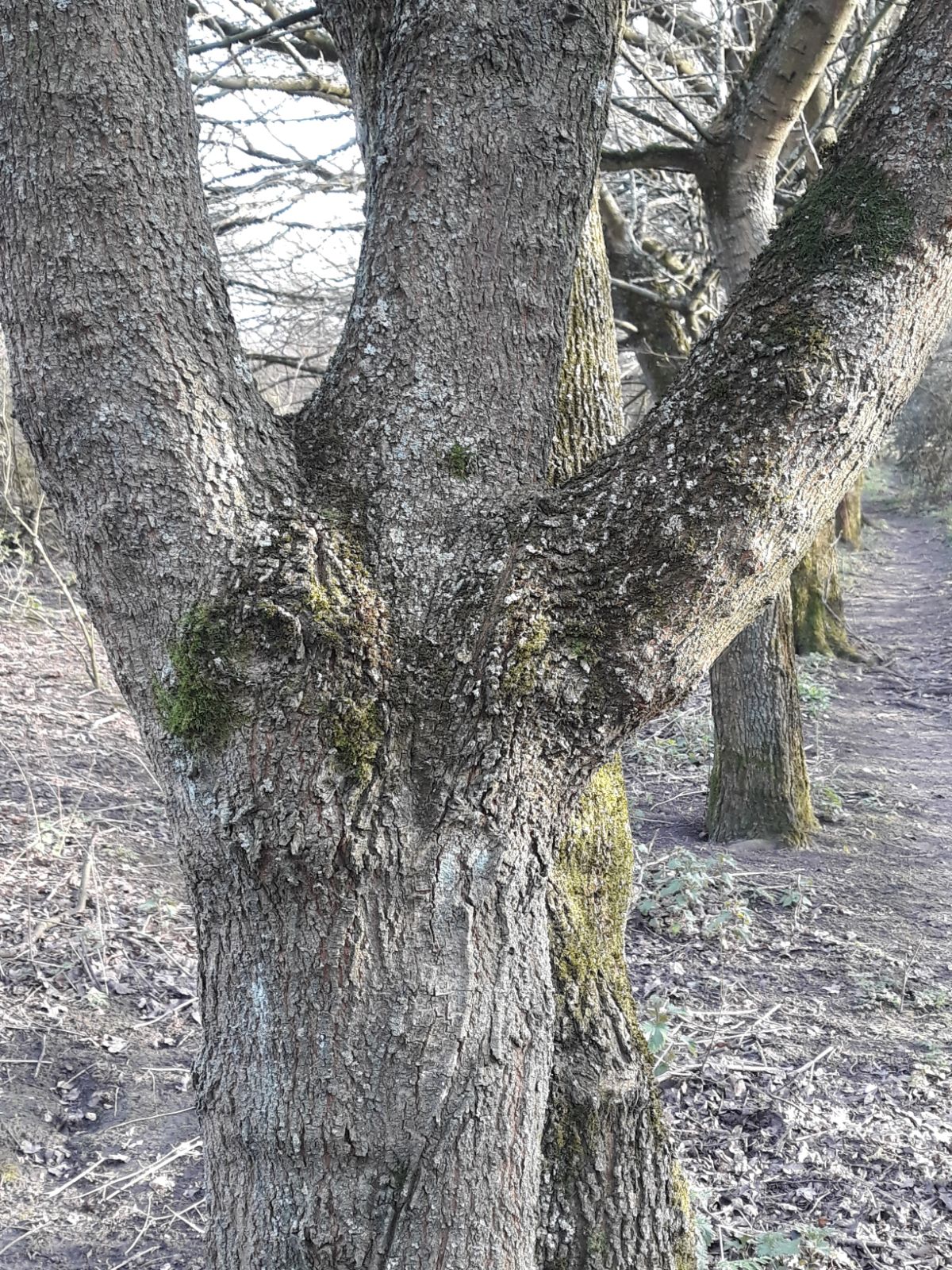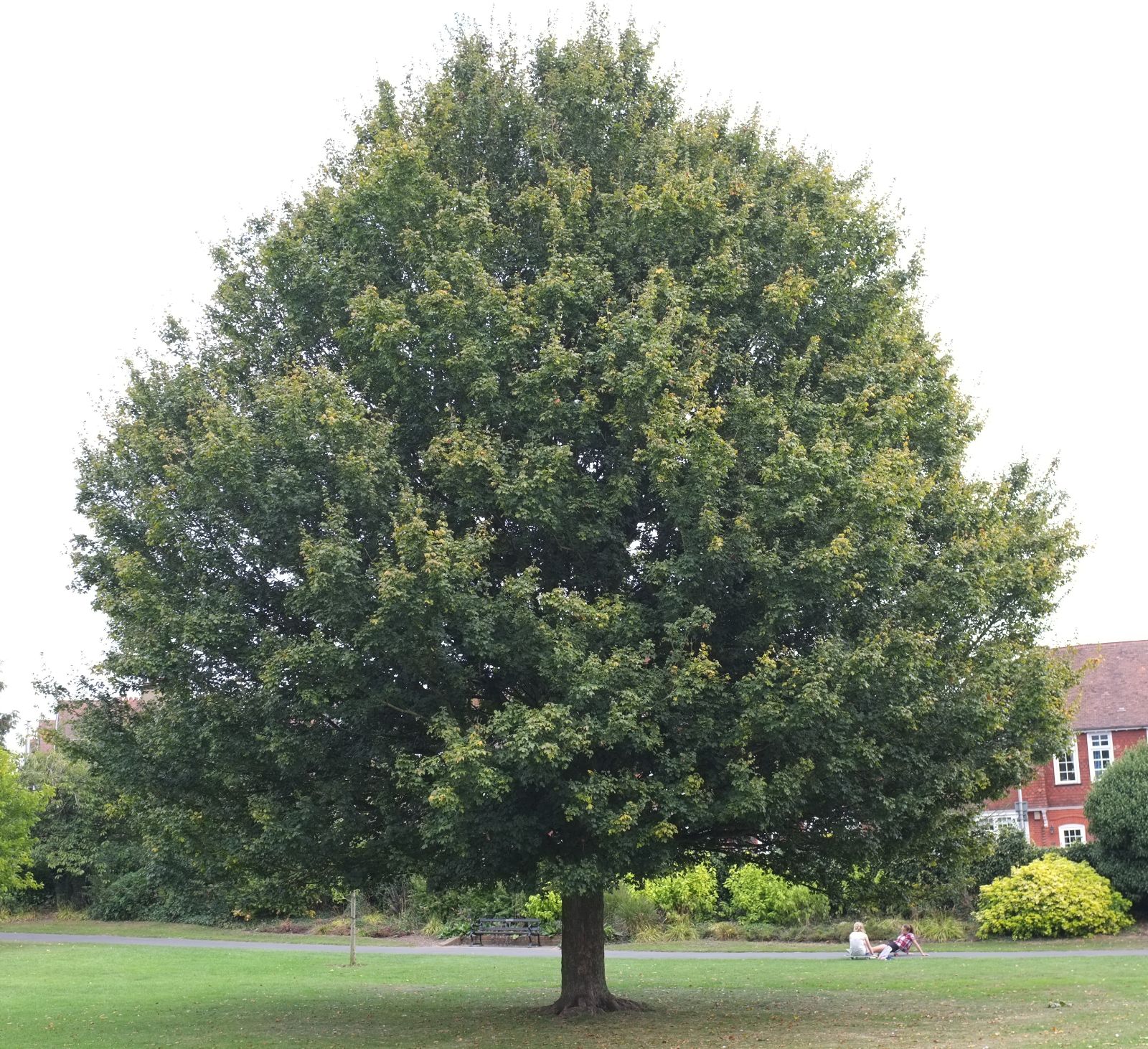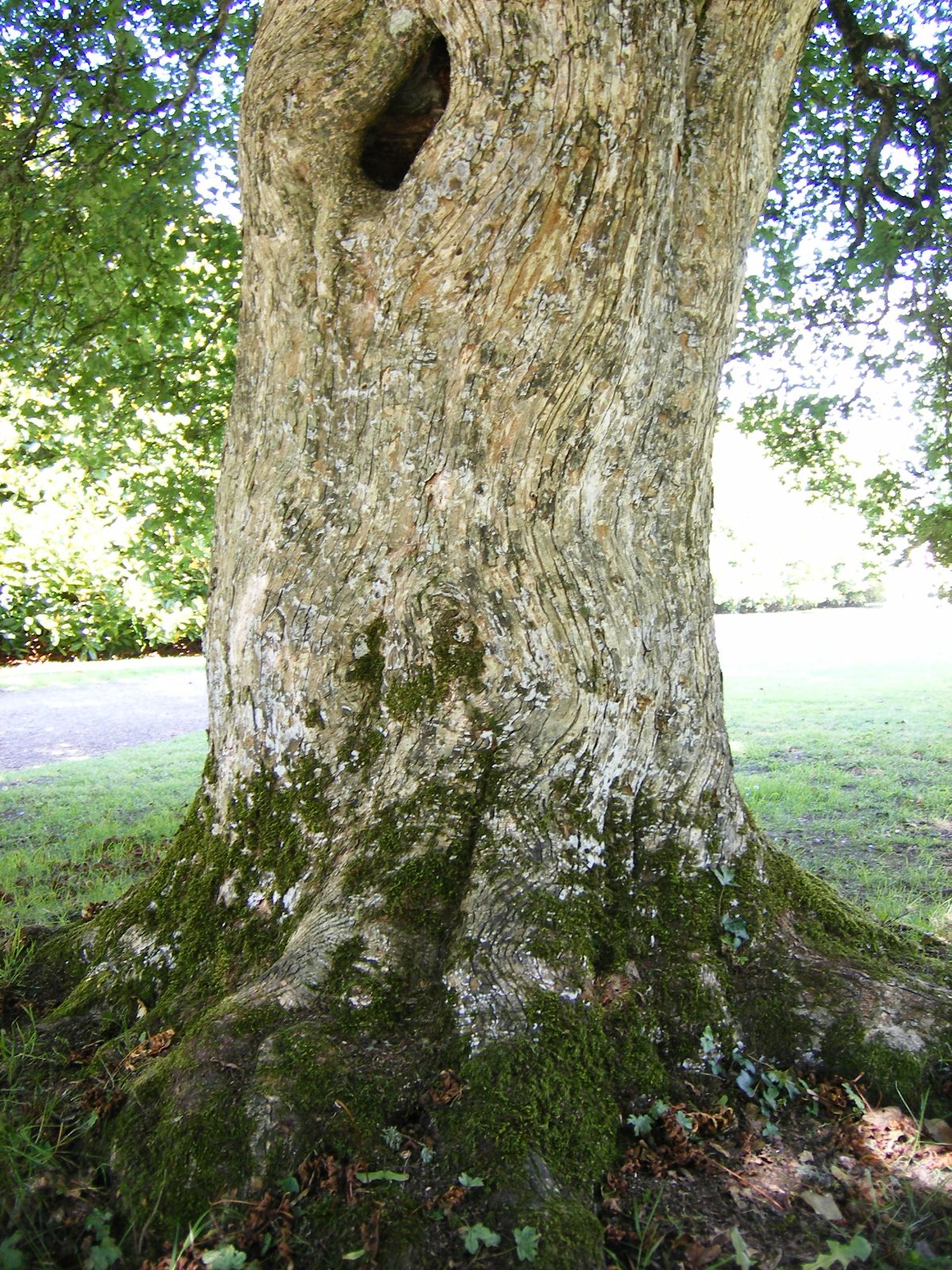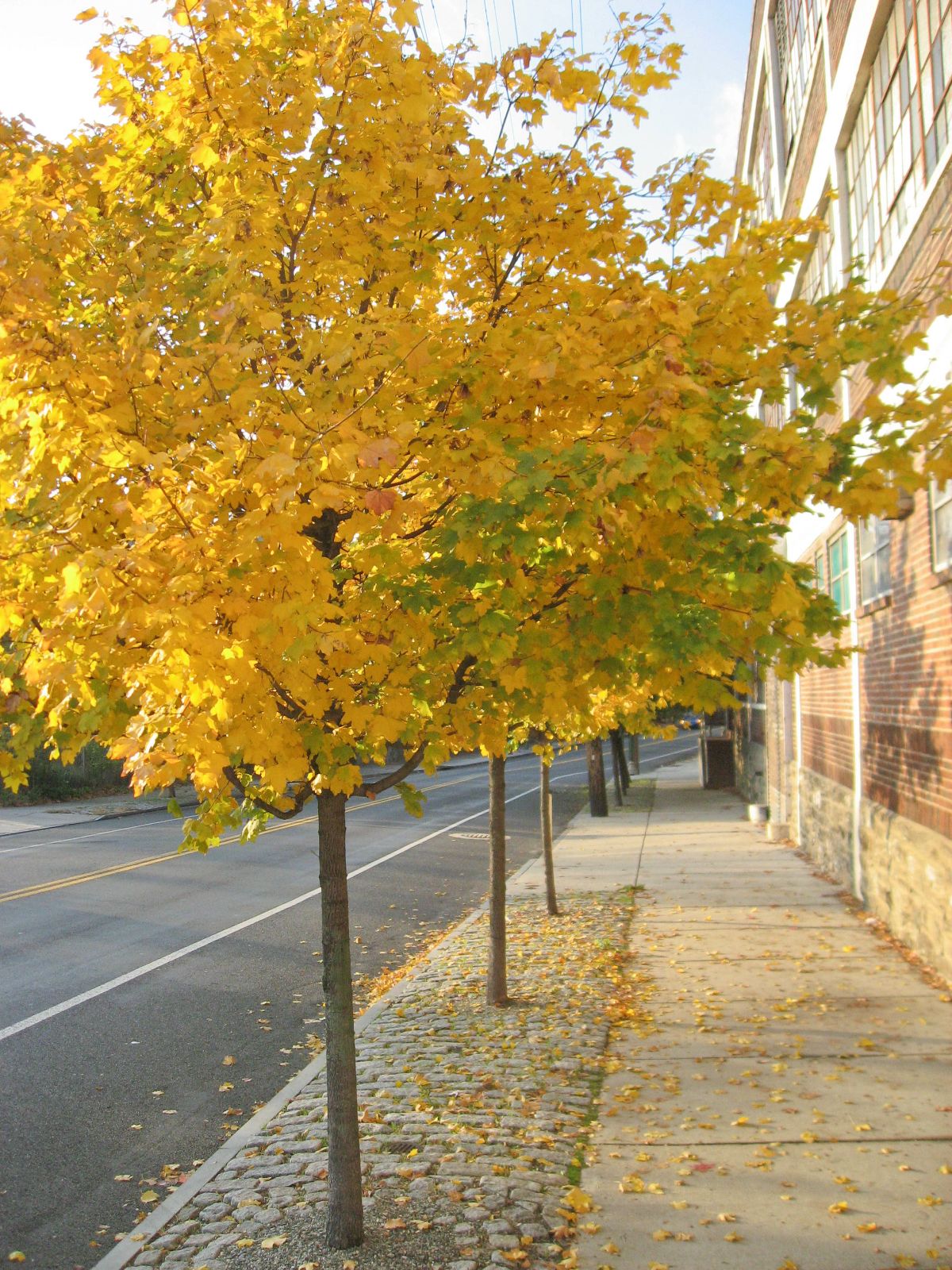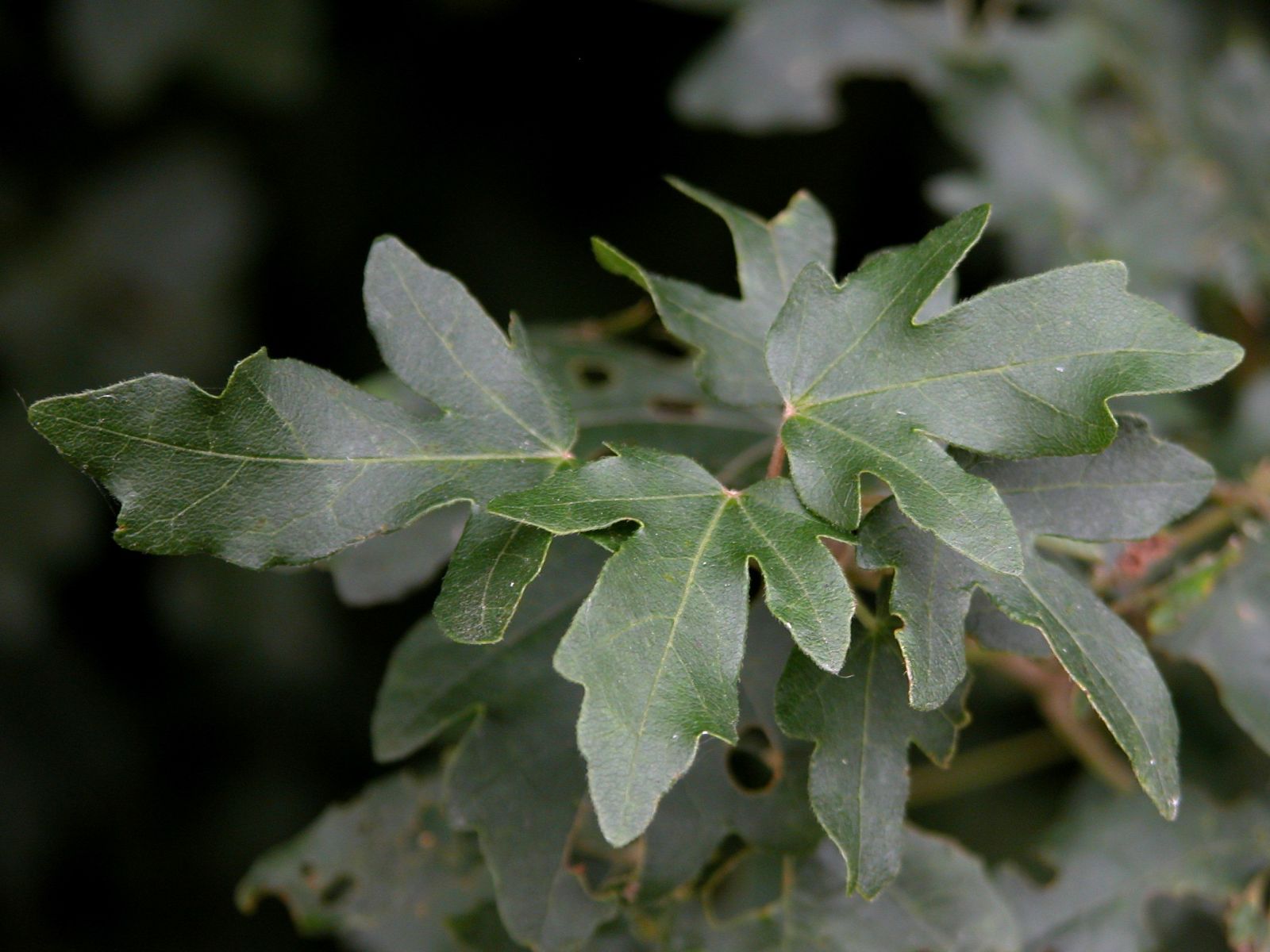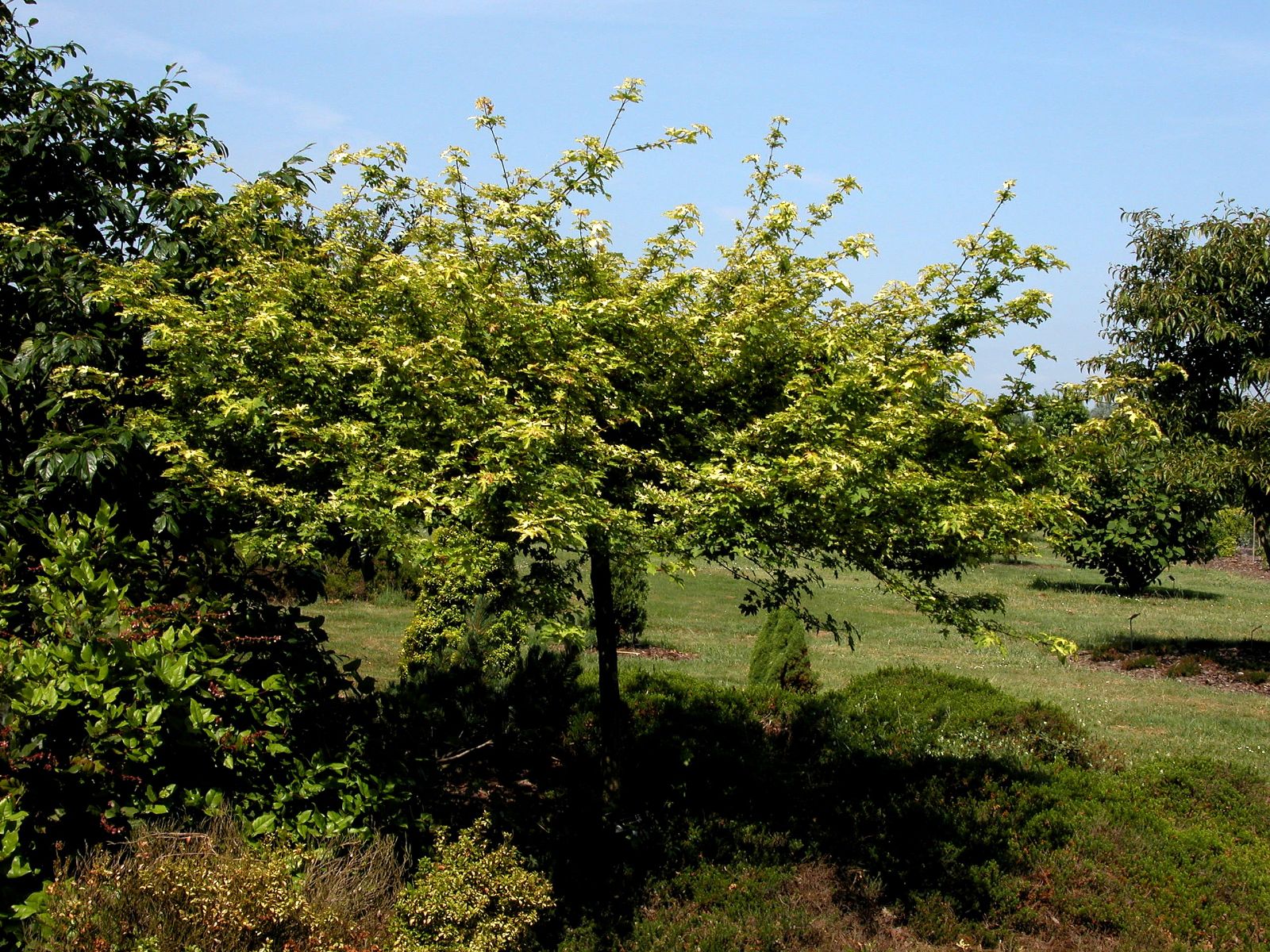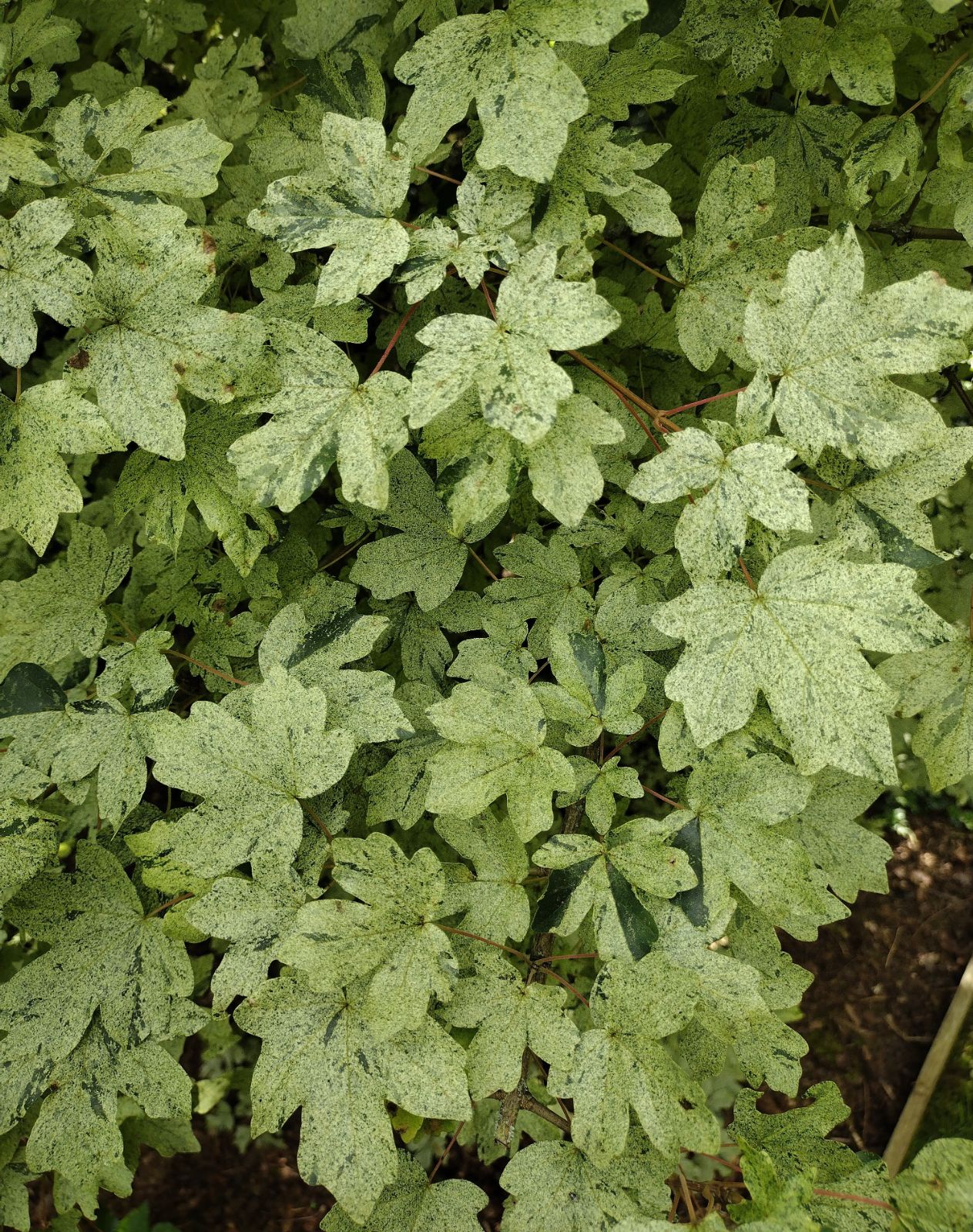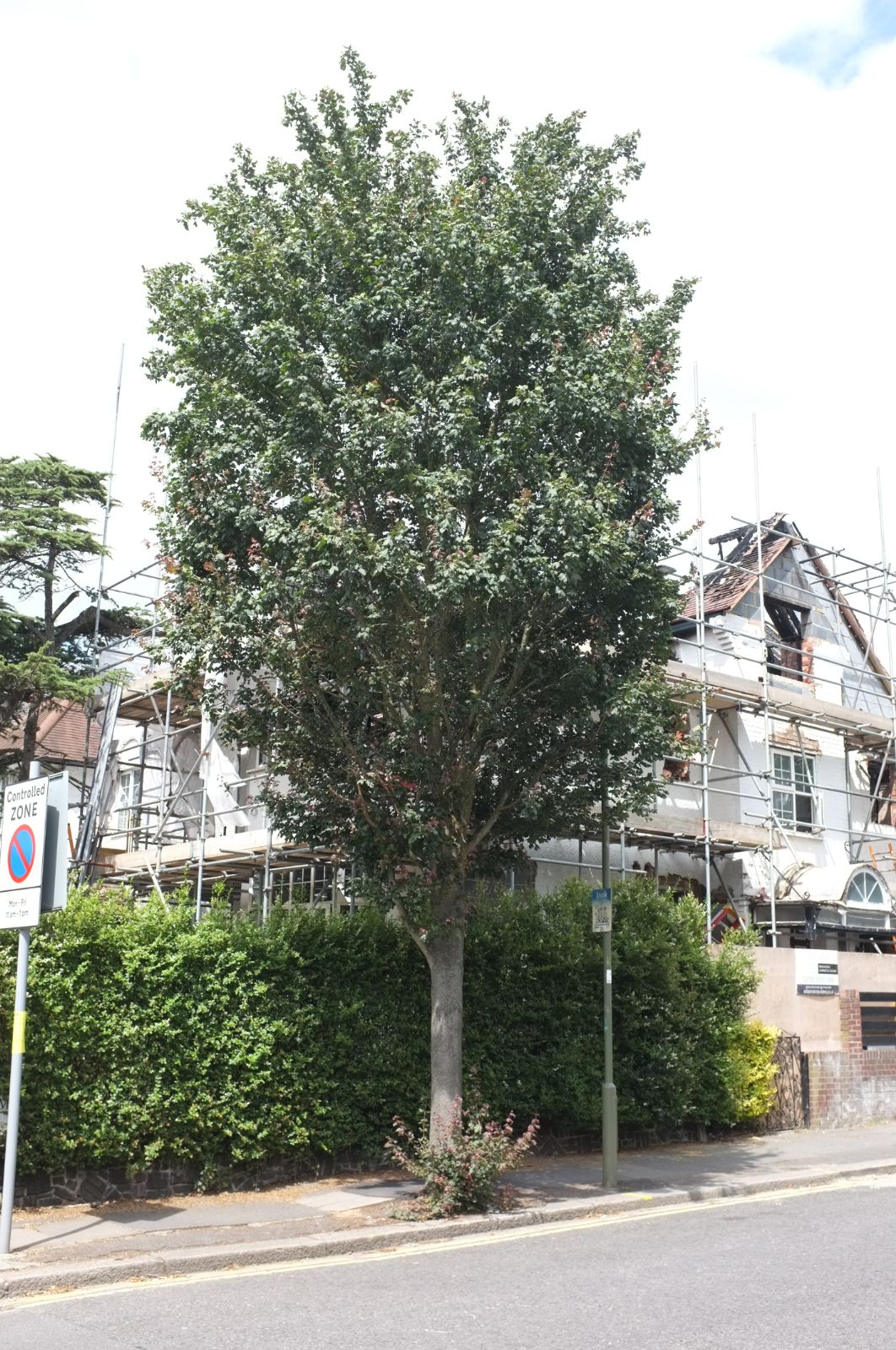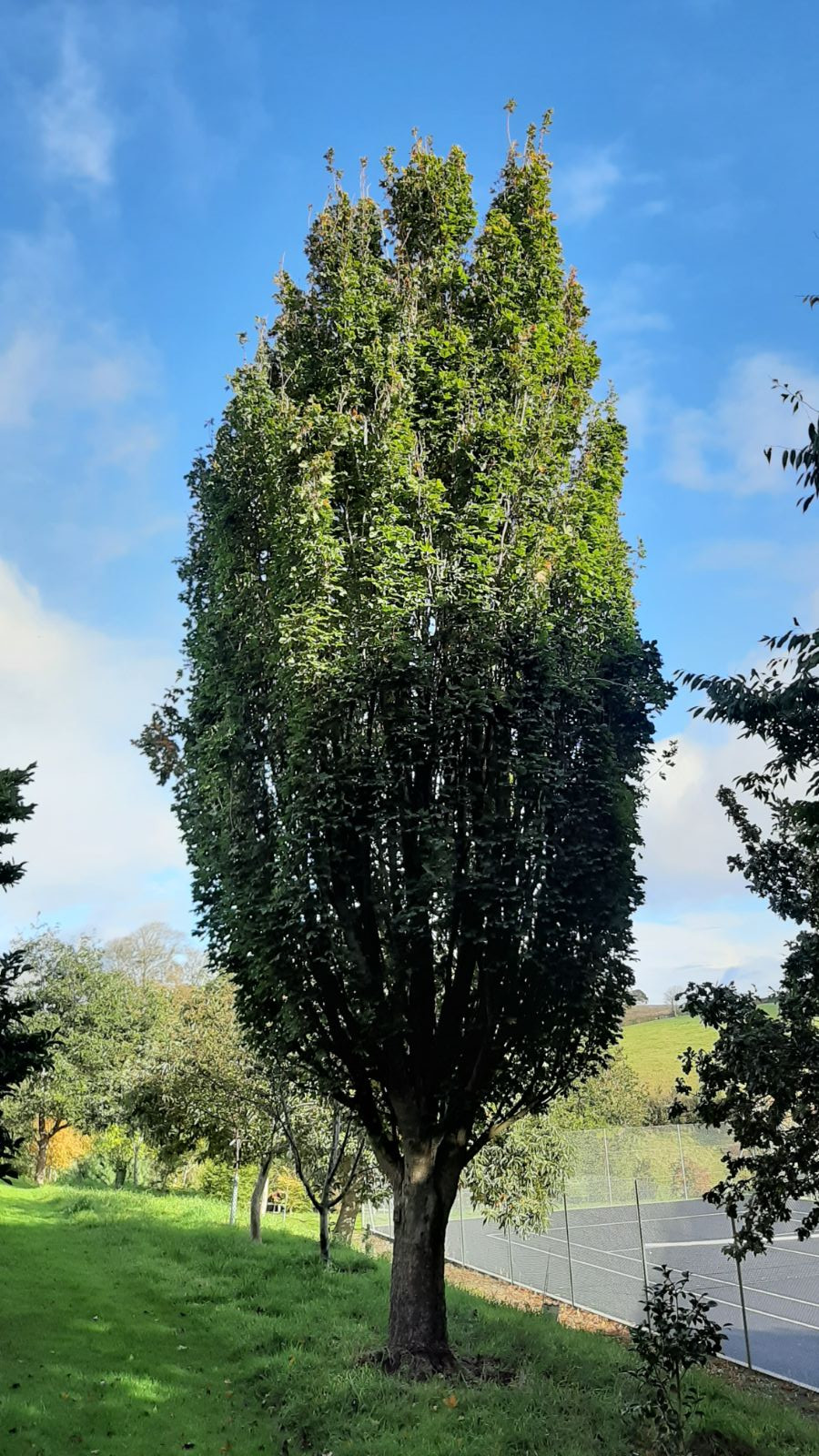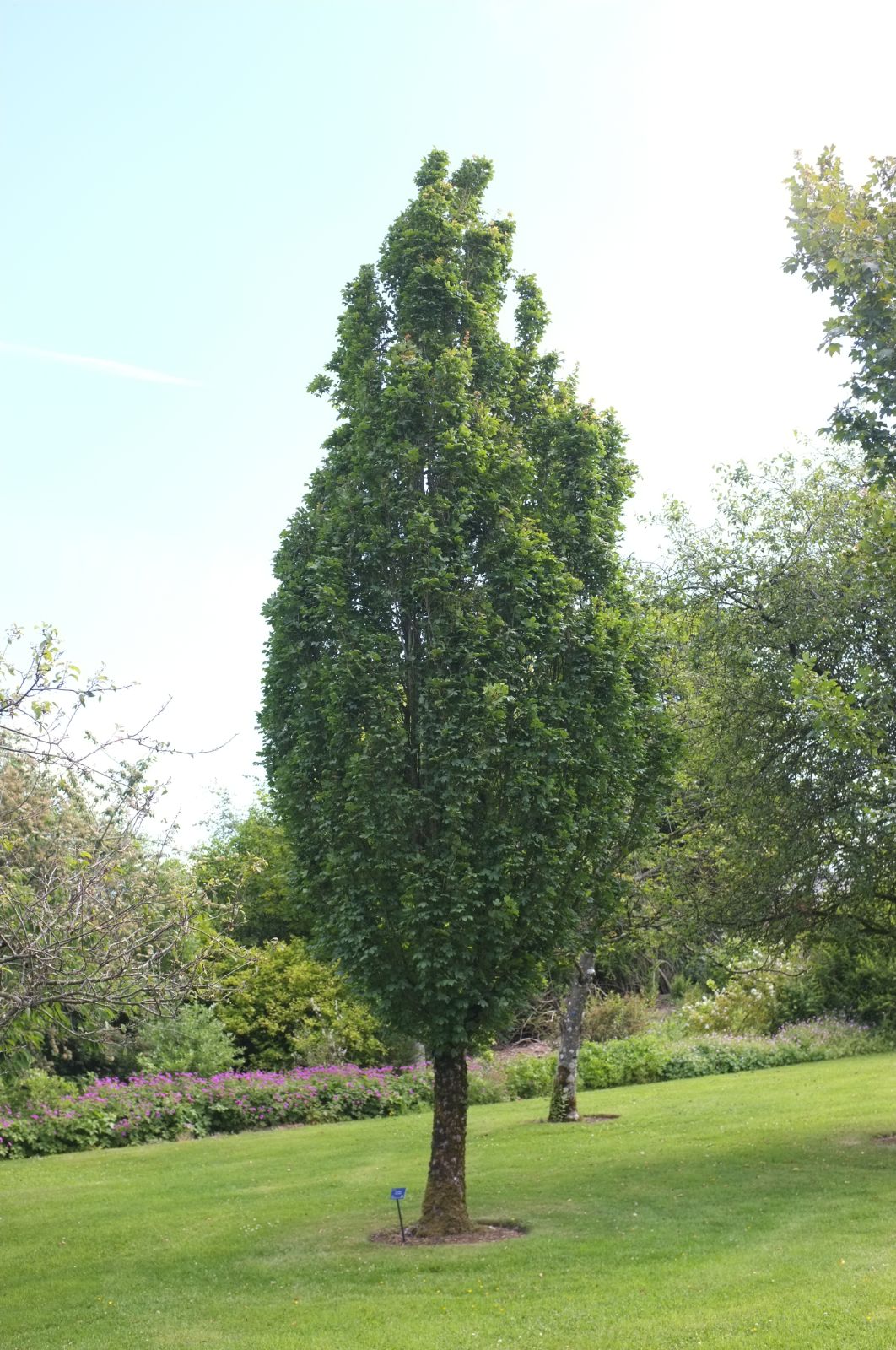Acer campestre
Sponsor
Kindly sponsored by
The Wynkcoombe Arboretum
Credits
Dan Crowley (2020)
Recommended citation
Crowley, D. (2020), 'Acer campestre' from the website Trees and Shrubs Online (treesandshrubsonline.
Genus
- Acer
- Sect. Platanoidea, Ser. Campestria
Common Names
- Field Maple
- Hedge Maple
- Érable champêtre
- Feldahorn
- Massholder
- Spaanse aak
- Veldesdoorn
Infraspecifics
- 'Anny's Globe'
- 'Carnival'
- 'Eastleigh Weeping'
- 'Elsrijk'
- 'Evelyn'
- 'Evenley Red'
- 'Green Weeping'
- 'Huibers Elegant'
- 'JFS Schichtel2'
- 'Microphyllum'
- 'Nanum'
- 'Panacek'
- 'Postelense'
- 'Pulverulentum'
- 'Red Shine'
- 'Royal Ruby'
- 'Schwerinii'
- 'Silver Celebration'
- 'Streetwise'
- 'Tauricum'
- var. leiocarpum
- 'WFHhedge1'
- 'WFHhedge3'
- 'William Caldwell'
- 'Zorgvlied'
Other taxa in genus
- Acer acuminatum
- Acer amplum
- Acer argutum
- Acer barbinerve
- Acer buergerianum
- Acer caesium
- Acer calcaratum
- Acer campbellii
- Acer 'Candy Stripe'
- Acer capillipes
- Acer cappadocicum
- Acer carpinifolium
- Acer 'Cascade'
- Acer caudatum
- Acer ceriferum
- Acer chapaense
- Acer chienii
- Acer circinatum
- Acer cissifolium
- Acer × conspicuum
- Acer cordatum
- Acer coriaceifolium
- Acer × coriaceum
- Acer crataegifolium
- Acer davidii
- Acer diabolicum
- Acer distylum
- Acer divergens
- Acer duplicatoserratum
- Acer elegantulum
- Acer erianthum
- Acer 'Esk Flamingo'
- Acer fargesii
- Acer fenzelianum
- Acer flabellatum
- Acer forrestii
- Acer franchetii
- Acer × freemanii
- Acer fulvescens
- Acer 'Gimborn'
- Acer ginnala
- Acer glabrum
- Acer 'Gold Coin'
- Acer granatense
- Acer grandidentatum
- Acer griseum
- Acer heldreichii
- Acer henryi
- Acer × hillieri
- Acer hookeri
- Acer hyrcanum
- Acer japonicum
- Acer kawakamii
- Acer komarovii
- Acer laevigatum
- Acer laurinum
- Acer laxiflorum
- Acer lobelii
- Acer longipes
- Acer macrophyllum
- Acer mandshuricum
- Acer maximowiczianum
- Acer maximowiczii
- Acer metcalfii
- Acer miaotaiense
- Acer micranthum
- Acer 'Mindavi'
- Acer 'Minorient'
- Acer miyabei
- Acer miyabei × campestre
- Acer monspessulanum
- Acer morifolium
- Acer 'Mozart'
- Acer oblongum
- Acer obtusifolium
- Acer okamotoanum
- Acer oliverianum
- Acer opalus
- Acer orientale
- Acer palmatum
- Acer papilio
- Acer pauciflorum
- Acer pectinatum
- Acer pensylvanicum
- Acer pentaphyllum
- Acer pentapotamicum
- Acer pictum
- Acer pilosum
- Acer pinnatinervium
- Acer platanoides
- Acer platanoides × amplum
- Acer platanoides × truncatum
- Acer × pseudoheldreichii
- Acer pseudoplatanus
- Acer pseudosieboldianum
- Acer pubinerve
- Acer pycnanthum
- Acer rubescens
- Acer rubrum
- Acer rufinerve
- Acer saccharinum
- Acer saccharum
- Acer sempervirens
- Acer 'Serpentine'
- Acer serrulatum
- Acer shenkanense
- Acer sieboldianum
- Acer sikkimense
- Acer 'Silver Cardinal'
- Acer 'Silver Ghost'
- Acer sinense
- Acer sinopurpurascens
- Acer spicatum
- Acer stachyophyllum
- Acer taronense
- Acer tataricum
- Acer tegmentosum
- Acer tenellum
- Acer tetramerum
- Acer tibetense
- Acer tonkinense
- Acer triflorum
- Acer truncatum
- Acer tschonoskii
- Acer turkestanicum
- Acer tutcheri
- Acer ukurunduense
- Acer velutinum
- Acer wardii
- Acer 'White Tigress'
- Acer wilsonii
- Acer × zoeschense
A deciduous tree to 15(–25) m. Bark grey to pale brown devolping shallow, longitudinal fissures with age. Branchlets greenish- to reddish-brown, soon glabrous, often developing corky ridges. Buds small, ovoid, with 4 to 6 pairs of imbricate scales, brown. Leaves broadly pentagonal in outline, base cordate, (3–) 5– (–7) lobed with broad sinuses, (1.5–)3–8.5(–11) × (1.5–)3–8(–10) cm, lobes apically obtuse or acute, margins entire to undulate, upper surface mid- to dark green, pubescent at least at first, lower surface pale green, glabrous or pubescent throughout, with or without tufts in vein axils; petiole to 5 cm long, green, sometimes red above, pubescent, often grooved, broadest at base, exuding a milky sap when broken; autumn colours yellow. Inflorescence terminal, corymbose, somewhat erect, usually pubescent, ~10 flowered. Flowers yellowish-green, 5-merous, usually dioecious, sepals and petals oblong, petals as long, or shorter than sepals, stamens 8, inserted in the middle or on outside of the nectar disc. Samaras 2–3.5(–4) cm long, wings spreading nearly horizontally, glabrous or pubescent. Nutlets flattened. Flowering in April, appearing after leaves, fruiting in October. (van Gelderen et al. 1994; le Hardÿ de Beaulieu 2003; Güemes Heras & Sánchez Gómez 2015; Schulz 2018).
Distribution Albania Algeria Andorra Armenia Austria Azerbaijan Belarus Belgium Bosnia and Herzegovina Bulgaria Croatia Czechia Denmark France Georgia Germany Greece Hungary Iran Ireland Italy Liechtenstein Luxembourg North Macedonia Moldova Monaco Montenegro Netherlands Poland Portugal Romania Russia San Marino Serbia Slovakia Slovenia Spain Sweden Switzerland Tunisia Turkey United Kingdom
Habitat Mesophilic mixed and Quercus woodlands, 0–1600 m asl.
USDA Hardiness Zone 3-5
RHS Hardiness Rating H6
Awards Award of Garden Merit
Conservation status Least concern (LC)
Acer campestre is one of Europe’s most widespread maple species, and the only one to reach as far west as Britain and Ireland. It extends south to North Africa and east to parts of western Asia. In Britain it is often seen in ancient woodlands and hedgelines and is a key component of many British countryside landscapes – modern as well as ancient. Remnant wild specimens form part of the maple collection at Westonbirt Arboretum, Gloucestershire. Although often considered to be a small ‘hedgerow’ tree it can achieve respectable sizes. The Tree Register (2020) records several specimens over 20 m in Britain and Ireland, and the tallest recorded was 25 m in 2007, at Kinnettles House, Angus (Johnson 2011). Many can have a large girth, 5–6 m being not uncommon, and possibly the result of former coppicing, but the massive 1625 cm girth of a tree in Hatfield Forest, Essex, measured in 2007, may be the result of ‘bundle planting’ where several individuals have grown together (Tree Register 2020). The timber is harder than that of Acer pseudoplatanus and if large enough pieces are available can be used for similar purposes (Savill 2019).
The species is also one of the most adaptable and undemanding of all maple species in cultivation (Gregory 2011), and is one of the best British native species for autumn colour, often turning bright yellow. It does well on most soils though prefers to grow on chalk in warmer areas (Gregory 2011). It is also tolerant of pollution, lending itself to widespread use as an urban tree, typically in the guise of one of the many named cultivars. It makes a neatly shaped tree at its best, though may also be little more than a shrub, it is also well used for hedging. Indeed, hedges at the former summer palace of the Austrian Emperors at Schönbrunn, Vienna, are formed mainly of Acer campestre (Bean 1976a). Though evidently versatile, the species can be prone to powdery mildew infection, and it can be very badly damged by Grey Squirrels.
Morphologically it appears closest to the Japanese Acer miyabei and the Chinese A. miaotaiense. In comparison with A. miyabei, A. campestre has smaller leaves and more rounded lobe apices, and shorter petioles. From A. miaotaiense, the basal lobes of A. campestre spread more broadly and its lobe apices are blunter. Other similarly leaved maples lack the milky sap present in A. campestre (and all species of Section Platanoidea).
Numerous lower taxa have been described variously at subspecific and varietal rank, and van Gelderen et al. (1994) appear not to accept all of those they include accounts for. An up-to-date appraisal of the range of variation found across the range appears to be lacking, while plants are rarely determined at lower ranks. Stace (2019) states that so-called var. leiocarpum, with glaborus fruits, occurs in the wild in Britain, as well as the typical form, and that recent amenity plantings of Acer campestre are often of continental European origin, adding a diversity of morphology to the native population. Recently planted Field Maples are a common component of roadside plantings, frequently with Cornus sanguinea, Viburnum opulus and Prunus avium, resulting in a brilliant autumn display along the British highway network.
Variation in horticultural selections is found in tree shape and form, and in leaf pigmentation differences; it does not show anything like the diversity seen in A. pseudoplatanus, for example. A few variants from the wild appear in the literature under various combinations of botanical names: f. suberosum (author needed) has strongly corky twigs (such forms are quite frequent in the wild), while var. acuminatilobum Papp from Hungary is suppposed to have long tips to its leaf lobes, but is very dubiously distinct (van Gelderen et al. 1994).
Collections from across the range are well represented in arboreta in both Europe and North America, with accessions from Belgium, Czech Republic, Denmark, France and Russia at RBG Edinburgh (Royal Botanic Garden Edinburgh 2018) and others from Iran, Ireland, Hungary and the Czech Republic at the Arnold Arboretum, Boston (Arnold Arboretum 2018). Some introductions made to Britain in recent years have at least in part, been made for experimentation in light of the projected (and evident) warming climate. TUDI 116 collected in northeastern Turkey in 2005 grows at Westonbirt, interesting not just for its geographic origin alone, but also as it is from this region that a cryptic species, A. orthocampestre, was recently described (Grimm & Denk 2014). WITA 63, collected in northern Italy near Lake Garda is also represented at Westonbirt. AHAL 330, collected in Spain, where in southern areas the species is somewhat rarer (van Gelderen et al. 1994), grows at Kew and belongs to this species rather than A. monspessulanum, as previously labelled.
The species is also well represented in cultivation by its cultivars, selected variously for form and foliage coloration, while numerous other names are mentioned by van Gelderen et al. (1994) as no longer being in cultivation. These are discussed as part of the relevant cultivar accounts below. Though the predominant coloration of the autumn foliage is yellow, it can also turn red (Clarke 1988). Intriguingly, Bean states that ‘according to Hegi’s Flora von Mitteleuropa, it is the downy-fruited form that usually colours red, the glabrous-fruited form always yellow.’ It is unclear how consistent this correlation is, however.
'Anny's Globe'
RHS Hardiness Rating: H6
A round-crowned form with yellow autumn colour (van den Berk Nurseries 2019), seemingly with litte to distinguish it from typical forms of A. campestre.
'Carnival'
Awards
Award of Garden Merit
RHS Hardiness Rating: H6
Distinguished by its leaves having broad, pale margins, ‘Carnival’ was selected as a seedling by A. van Nijnatten in the Netherlands and introduced by him in 1989. It is slow growing and prone to sunburn if overexposed (van Gelderen and van Gelderen 1999). It does not seem to be prone to reversion.
'Eastleigh Weeping'
RHS Hardiness Rating: H6
A weeping form selected by the Hillier Nurseries and introduced in 1981, scarcely differing from ‘Green Weeping’ (van Gelderen et al. 1994).
'Elsrijk'
RHS Hardiness Rating: H6
Common as a street tree in Europe, ‘Elsrijk’ is an upright tree with a dense crown of conical habit (van Gelderen & van Gelderen 1999; Edwards & Marshall 2019). It was introduced by C.P. Broerse, a Dutch garden architect, in 1953 (van Gelderen & van Gelderen 1999). Confusingly, van Gelderen et al. (1994) state that it has small leaves, 4–6 cm across, though van Gelderen & van Gelderen (1999) describe its leaves as larger than typical for the species.
'Evelyn'
Synonyms / alternative names
Queen ElizabethTM
RHS Hardiness Rating: H6
A vigorous J.F. Schmidt selection cultivated since 1985 (Schmidt 2019; Edwards & Marshall 2019), ‘Evelyn’ is similar to the Dutch ‘Elsrijk’, with an upright habit (van Gelderen & van Gelderen 1999). It is thus suited to use a street tree but at the Sir Harold Hillier Gardens, Hampshire, at least, it has been found susceptible to powdery mildew infection (Edwards & Marshall 2019).
'Evenley Red'
RHS Hardiness Rating: H6
A hedgerow seedling, selected by the late Tim Whitely at Evenley Wood Garden and in cultivation since 1999 (Hatch 2018–2020), ‘Evenley Red’ is noted for its exceptional red autumn colour (Edwards & Marshall 2019).
'Green Weeping'
Synonyms / alternative names
RHS Hardiness Rating: H6
A pendulous form found as a chance seedling and introduced by A. van Nijnatten in 1981. It grows as a tree when grafted onto a standard or, less often, as a large shrub (van Gelderen & van Gelderen 1999). Its leaves are typically sized for the species and its branches slightly corky. It is different from the far older ‘Pendulum’, a small tree of German origin, which is likely no longer in cultivation (van Gelderen et al. 1994; van Gelderen & van Gelderen 1999). See also ‘Eastleigh Weeping’.
'Huibers Elegant'
Synonyms / alternative names
Acer campestre 'Elegant'
RHS Hardiness Rating: H6
‘Huibers Elegant’ has a narrow, pyramidal crown and is resistant to powdery mildew (van den Berk Nurseries 2019).
'JFS Schichtel2'
Synonyms / alternative names
Streetside R
RHS Hardiness Rating: H6
A vigorous selection with upright branches, ‘JFS Schichtel2’ has a distinctly narrow form and colours well in autumn (Schmidt 2019).
'Microphyllum'
RHS Hardiness Rating: H6
A German selection introduced in 1853, ‘Microphyllum’ is a shrub to 3 m with very small leaves (van Gelderen et al. 1994).
'Nanum'
Synonyms / alternative names
Acer campestre 'Compactum'
Acer campestre 'Globosum'
RHS Hardiness Rating: H6
A densely branched, rounded shrub to 5 m tall, ‘Nanum’ has smaller leaves than typical forms of the species. Drought tolerant, it is described as suitable for containers and also for bonsai, though it may produce strong growing shoots, which should be removed. It was originally described by Loudon in 1839 (van Gelderen et al. 1994; van Gelderen & van Gelderen 1999).
'Panacek'
Synonyms / alternative names
Metro Gold™
RHS Hardiness Rating: H6
Selected by nurseryman Herman Panacek and introduced by J.F. Schmidt Nurseries, this selection has a narrow, upright form, produces few seeds and is said to have very good yellow autumn colour (Schmidt 2019).
'Postelense'
Synonyms / alternative names
Acer campestre 'Postel'
RHS Hardiness Rating: H6
A selection with golden yellow leaves, most apparent in spring before they turn greenish-yellow (Edwards & Marshall 2019). On leafing out it is said to recall Forsythia while its petioles and buds are reddish. Intolerant of much sun, it was selected from a tree near Postel, Silesia (now in Poland) and described and introduced by R. Lauche in 1896 (van Gelderen et al. 1994; van Gelderen & van Gelderen 1999).
'Pulverulentum'
Synonyms / alternative names
Acer campestre 'Dusty'
Acer campestre 'Punctatum'
Acer campestre 'Variegata'
RHS Hardiness Rating: H6
A shrub or small tree with leaves irregularly speckled white, though sometimes up to half of the lamina can be green, without any speckles. Its leaves are smaller than normal for the species and it requires some protection from the sun. It was found and named at the Muskau Arboretum, now in Poland, in 1864 (Bean 1976; van Gelderen et al. 1994; van Gelderen & van Gelderen 1999).
The following are all comparable forms believed to no longer be in cultivation (van Gelderen et al. 1994):
- ‘Albo-maculatum’
- ‘Albo-punctatum’
- ‘Albo-variegatum’
- ‘Argenteo-marginatum’
'Red Shine'
Synonyms / alternative names
Acer campestre 'Louisa Red Shine'
RHS Hardiness Rating: H6
Raised by J.J.W.M. van den Oever of the Netherlands and introduced by him in 1980, ‘Red Shine’ has leaves that are purple at first, turning dark green and glossy with age (van Gelderen & van Gelderen 1999). In summer, the new growth contrasts well with that of earlier in the season and its fruits are blood red (le Hardÿ de Beaulieu 2003). It is, however, prone to mildew (van Gelderen & van Gelderen 1999).
'Royal Ruby'
RHS Hardiness Rating: H6
A fast-growing shrub introduced by A. van Nijnatten in 1980, ‘Royal Ruby’ has leaves that are purple in spring, turning to dark green in summer (van Gelderen et al. 1994). Comparable to ‘Red Shine’ in its new growth, though not as glossy (le Hardÿ de Beaulieu 2003), it is suitable for hedges though like many cultivars of this species it can suffer from mildew (van Gelderen & van Gelderen 1999).
'Schwerinii'
A form with leaves purple at first, later turning green. It was introduced and first distributed by Hesse’s nurseries, Germany, before 1899 (Bean 1976a). It makes a small tree though is prone to powdery mildew infection (van Gelderen et al. 1994).
'Silver Celebration'
RHS Hardiness Rating: H6
An offspring of ‘Carnival’, ‘Silver Celebration’ was introduced by Junkers Nursery, England, in 2001. It is less prone to sunscorch than ‘Carnival’ and seems a tougher plant, with thin, pale margins to its leaves, with one or two lobes usually with sections of slightly wider margins (Hatch 2018–2020).
'Streetwise'
RHS Hardiness Rating: H6
Selected by the Hillier Nurseries and introduced in 1998, ‘Streetwise’ is, as the name suggests, ideal for street planting, with a tidy, compact and upright habit. It also has excellent yellow autumn colour (Edwards & Marshall 2019).
'Tauricum'
RHS Hardiness Rating: H6
A selection described by Loudon in 1842, ‘Tauricum’ is a squat plant, often wider than tall with the lobes of the leaves more acuminate than typically found in A. campestre (le Hardÿ de Beaulieu 2003).
var. leiocarpum (Opiz) Wallr.
Synonyms
Acer campestre var. austriacum (Tratt.) DC
This name is supposed to represent a variant from southeast Europe with shrubby habit, hairy leaves and glabrous samaras (van Gelderen et al. 1994; Stace 2019) but it is dubiously distinct and is reduced to synonymy by van Gelderen et al. (1994).
'WFHhedge1'
Synonyms / alternative names
Hedge King™
RHS Hardiness Rating: H6
Small leaved and with a narrow form, this selection is said to be suited to both urban planting and for use as a hedging plant (Klyn Nurseries 2020).
'WFHhedge3'
Synonyms / alternative names
Emerald Splendor™
RHS Hardiness Rating: H6
Noted for its distinctly corky, winged branches, this selection turns a warm yellow in autumn. It was introduced by Klyn Nurseries of Ohio (Klyn Nurseries 2020).
'William Caldwell'
RHS Hardiness Rating: H6
A selection of upright habit, ‘William Caldwell’ was found in 1976 as a seedling at Caldwell’s Ollerton Nursery near Knutsford, Cheshire, by Donovan Caldwell Leaman, director of the nurseries. Among thousands of seedlings it stood out for its scarlet autumn colouring; only later did it become evident that it had an outstanding fastigiate form (Weightmann 2020). The name honours William Caldwell (1922–2001), the sixth of that name to be proprietor of the Caldwell & Sons Ltd Nurseries in Knutsford; the business closed in 1992 after trading for 212 years (Uings, Moth & Stevenson 2016). Interestingly, the cultivar was originally known as ‘King Canute’, in recognition of the trademark emblem of the Caldwell Nurseries (Wikipedia 2020); if that name was validly published it will take precedence. The cultivar was released in 1984 as ‘William Caldwell’: it has since found wide popularity in Europe and has been cultivated in the United States since 2012.
As a tidily columnar tree ‘William Caldwell’ is useful for narrower spaces, and can make an attractive avenue where appropriate, but it is not a particularly small tree. The British Champion, appropriately at Nether Alderley, not far from Knutsford in Cheshire, was 14.8 m (30 cm dbh) when measured in 2019, and there are numerous specimens over 12 m elsewhere in the United Kingdom (Tree Register 2020). In autumn its leaves turn a good orange-red (Edwards & Marshall 2019) especially so on acidic soil (Weightmann 2020).
'Zorgvlied'
RHS Hardiness Rating: H6
‘Zorgvlied’ is a Dutch selection, raised by C.P. Broerse and introduced by him in 1953. A sister seedling of ‘Elsrijk’ and of the same stature, it has smaller leaves than typical A. campestre, which turn yellow in autumn. Less frequently planted than ‘Elsrijk’, it is believed to be more prone to powdery mildew (van Gelderen & van Gelderen 1999).


